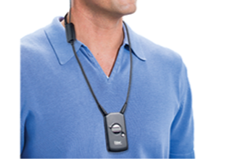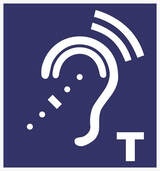What is a T-Coil? Why is it used?
- Using a very small coil of wire inside a portion of a hearing aid, a T-Coil allows the user to induct local magnetic sources into their ears.
- Invented in 1937 and gained popularity in Europe
- Large areas require a local magnetic field generated via an amplifier and large loop or phased-array of loops
Telecoils or T-coils (from "Telephone Coils") are small devices installed in hearing aids or cochlear implants. An Audio induction loop generates an electromagnetic field that can be detected by T-coils, allowing audio sources to be directly connected to a hearing aid. The T-coil is intended to help the wearer filter out background noise.
Installing Loops in Large Areas Require Site-Verification and Planning

Loops are magnetic fields and their strength is attenuated via large metallic surfaces and quantities of metal in the floor, ceiling and walls. Testing loops in the locations ensure the levels will be met and the loop will operate properly.
Some large areas require overlapping loops in a “phased array” to minimize spill into unwanted areas. Existing audio system and music instruments must be separated from the magnetic field. With a phased-array the loops are able to remain within’ the seating area with consistent level throughout and minimal spill over into the aisles or performing areas
Field strength works best at about 4-5’ from hearing aids / Ideally in the floor under carpet or saw-cut into concrete.
Some large areas require overlapping loops in a “phased array” to minimize spill into unwanted areas. Existing audio system and music instruments must be separated from the magnetic field. With a phased-array the loops are able to remain within’ the seating area with consistent level throughout and minimal spill over into the aisles or performing areas
Field strength works best at about 4-5’ from hearing aids / Ideally in the floor under carpet or saw-cut into concrete.
Wireless Assisted Listening Systems use Personal T-Coil Loops

Installation of a loop into floors can be costly. Wireless radio-based systems are as effective and cover more area. The difference is that the user requires a "neck-loop" and a receiver worn like a necklace.


